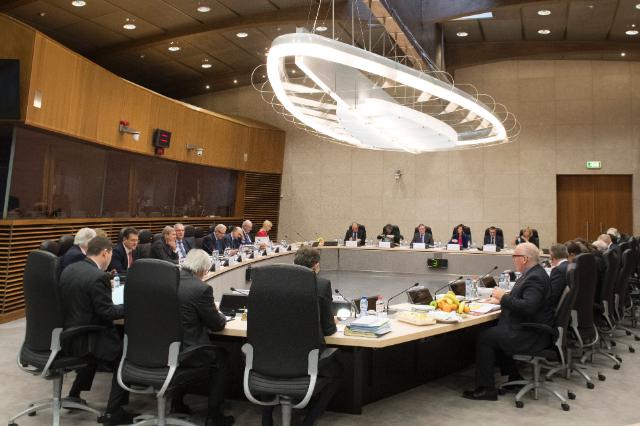

Photo:© European Union, 2017/ Source: EC - Audiovisual Service
Despite these and other recent positive signals – most notably the continuation of the ‘Berlin Process’, the Western Balkan 6 Meetings, the Western Balkans Connectivity Agenda, the adoption of the Declaration on the Solution of Bilateral Disputes, and the opening of the Secretariat of the Regional Youth Cooperation Office – the political messages coming from Brussels have made the prospect of enlargement very uncertain for the WB countries.
The dynamic changed with an announcement by the President of the European Commission, Jean-Claude Juncker, who stated that the EU needs to maintain acredible enlargement perspectivefor the WB. In aLetter of Intentto the President of the European Parliament and the Estonian Prime Minister, Juncker announced plans to create a strategy for the successful accession of Serbia and Montenegro to the EU.
A few days ago, media in the Western Balkans published unconfirmed extracts of allegedly leaked parts of the EU Enlargement Strategy. According toJutarnji list, the document offers Serbia and Montenegro the prospect of membership in 2025. By then, these countries must have resolved all ongoing border disputes, as the EU refuses to import existing problems. Most importantly, the document suggests that the end of 2019 is foreseen as the deadline to conclude a legally binding document on the normalisation of relations between Serbia and Kosovo.
Several dilemmas persist: first, it is unclear whether 2025 should be understood as the absolute deadline or the earliest possible date of accession for the current frontrunners. Second, does the exclusive mention of Serbia and Montenegro exclude other WB countries from catching up and joining the EU at the same time? Lessons learned from the 2004 ‘big bang,’ but also from the WB visa liberalisation process, show that the ‘stadium’ approach might be beneficial as it encourages cooperation between the candidate countries and creates healthy competition in conducting the necessary reforms, as no country wants to be left behind. Remembering cases when other former Yugoslav countries were successful in slowing down their neighbours’ accession processes by imposing bilateral membership conditions spells out a clear warning that the current laggards of the accession process should be given the same timeframe for accession, as long as they meet the criteria.Preventing future blockages in the accession process has to be an important component of any future strategy.
Next, amidst growing criticism that EU enlargement and democratisation are no longer seen as two parallel processes in the Balkans, the forthcoming Strategy shouldsharpen the EU’s focus on monitoring the aspiring members on their paths to stable and prosperous democracies governed by the rule of law. Without exception, it must highlight all democratic deficiencies in the WB countries. The EU should send high-level expert missions to assess the practice of the reforms, based on the Priebe Report. It is important that the EU continues to use local expertise in this matter, for example through commissioning regular ‘shadow’ reports on the state of democracy. Here, the Commission needs to ensure that the criticism that is articulated behind closed doors becomes more audible.
At the same time,all the WB countries should be asked to draw up an Action Plan for Chapters 23 and 24, which, after a screening exercise, should lead to their opening as soon as possible. This scenario would replicate the success of the visa liberalisation process, as it would encourage regional competition between aspiring member countries and increase the density of ties and linkages between the EU and domestic elites in the WB, thus expanding the EU’s transformative power in the accession laggards. This should be followed bytheconditional mobilisation of financial resourcesfor priority projects with a huge economic multiplier effect, such as infrastructure projects, education, skills, innovation and applied research. Drawing from this financial line, however, would be strictly conditioned by countries’ successful performances in meeting the accession criteria set in negotiating Chapters 23 and 24.
Finally, the EU should continue to play a crucial role in facilitation and mediation byfocusing on incentives for the resolution of disputes, particularly for the settlement of border disputes and minority rights issues. To accelerate the process, a specific EU coordination body should be appointed to facilitate and oversee reporting on the progress of bilateral dispute resolution. The European External Action Service is the most obvious choice to take on this role, with the involvement of the EU Parliament and the Council of Europe. Equally important is that this platform also provides space for the involvement of civil society organisations in the debates and recommendations on how to tackle bilateral issues, thus bringing them squarely into the public arena.